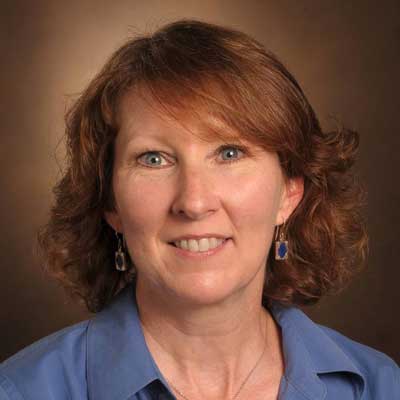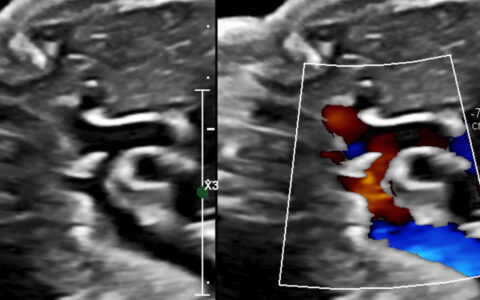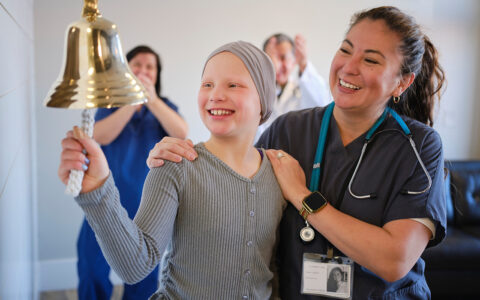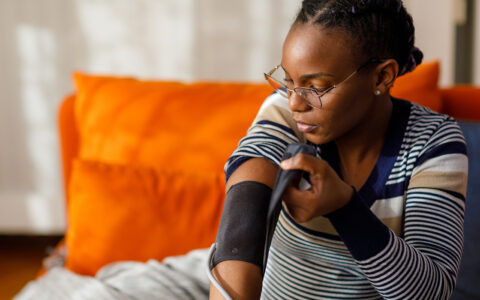In an effort to find alternatives to using animals in research, plus a need for more precise laboratory models, researchers at Vanderbilt University have developed an organ-on-a-chip device that mimics cellular interactions found in the female reproductive tract.
The innovative technology has myriad applications, one of which is to characterize environmental toxicant exposure risks during pregnancy. Driving this research is Kevin Osteen, Ph.D., Pierre Soupart Chair of Obstetrics and Gynecology at Vanderbilt University Medical Center.
“Organ-on-a-chip provides a better interaction between cell types that can be used to study fetal-maternal signaling during pregnancy,” wrote Osteen and colleagues in an initial proof-of-concept paper.
Modeling Disease-Toxicant Interactions
Osteen says many factors can influence in utero responses to environmental toxicants. He recently teamed up with Kaylon Bruner-Tran, Ph.D., a professor in the Department of Obstetrics and Gynecology at Vanderbilt, and earned EPA funding to determine if certain preexisting conditions may increase sensitivity to environmental toxicants.
For the award, Osteen, Bruner-Tran and others are pairing animal studies with in vitro analyses of human cells using their organ-on-a-chip microfluidic model of the human menstrual cycle, the EndoChip.
“We want to model the phenotypes we observe in animals with an organ-on-a-chip using human cells, and show that the chip has fidelity to the in vivo animal studies,” Bruner-Tran said. “The organ-on-a-chip will both reduce the use of animals and enable us to do experiments involving toxicants which we could never do in humans.”
Their specific research aims are two-fold: to examine how preexisting inflammatory disease affects the cellular response to toxicant exposure and vice versa, how prior toxicant exposure affects the cellular response to an inflammatory challenge.
Building on Existing Knowledge
Osteen and Bruner-Tran have been studying environmental triggers of inflammation and endometriosis for several years. They recently published a review article outlining currently available rodent models to study the phenomena and seminal findings.
Already, they’ve used organ-on-a-chip technology to mimic human endometriosis and demonstrate early events of decidualization in the endometrium. This recent work provides a foundation for environmental toxicant studies under the EPA award. Organ-on-a-chip technology is also supporting work by Vanderbilt assistant professor of obstetrics and gynecology, Lara F. Harvey, M.D.
Transgenerational Risk
The researchers emphasize negative effects of environmental toxicants can span generations, affecting not only the reproductive health of those directly exposed, but multiple generations of descendants as well.
Osteen and Bruner-Tran previously reported that in utero exposure to dioxin, a chemical released into the atmosphere during combustion of fossil fuels, wood and waste, can cause transgenerational reproductive dysfunction in mice.
“Even in the fourth generation after that first toxicant exposure, we still see an increased risk of infertility and preterm birth in mice that are able to become pregnant,” Bruner-Tran said. Their most recent studies revealed that as neonates, mice with a history of exposure frequently developed necrotizing enterocolitis. Necrotizing enterocolitis is a potential fatal inflammatory disease of the intestine that most commonly affects human infants that were born preterm.
The long-term goal of the research is to identify at-risk individuals earlier, buying time for nutritional or pharmacologic interventions that reduce the risk of endometriosis, infertility and adverse pregnancy or neonatal outcomes. Organ-on-a-chip technology could reveal which interventions might be most effective, Osteen said.
“Maybe your grandparents are exposed to a toxicant, and then you’re exposed to an inflammatory challenge like an infection, and it puts you over the edge,” he explained. “The 32-year-old woman at the clinic with endometriosis and infertility – can we identify her when she is 14, intervene, and reduce the likelihood of her arriving at the clinic as an infertility patient in the first place?”





